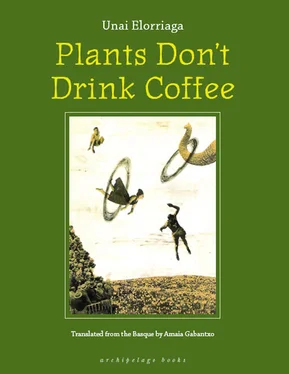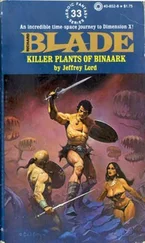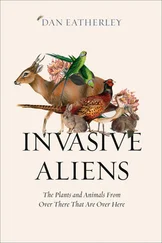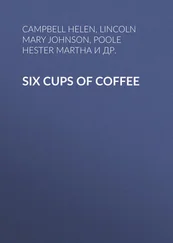It seemed like Tomas was the only one imagining what Sorin Firs’ house must have been like. In the sewing room.
“Sorin Firs’ house was all grass,” said Piedad again. “And every now and then Sorin would tear off a handful of grass. Samuel told me this too; that every now and then Sorin Firs would show this bunch of grass in his hand and he would say: ‘This grass is grass from my roof.’ And then he would put it in his pocket. And after a few days he would take it out again and show it to people. And Sorin Firs was completely mad, but there was a reason for this gesture.”
And Piedad told us. She said that the grass would be completely dry, of course. After being inside a pocket for so many days. Sorin would take the dry grass out of his pocket and say: “This here is Marne grass now.” Piedad explained that the Marne is a river. And that a battle was fought in the Marne. During the war. It was a big battle, against the Germans. And Piedad didn’t know very well what Sorin Firs was, German or French. But that’s what he said when he took the grass out of his pocket: “This here is Marne grass now.”
Spiders make webs. Not houses. Architects make houses. Spiders, webs. But spiders are architects too, sort of, because they make webs. But not people. Some people are architects and other people not. But all spiders are kind of architects. Like birds.
Aunt Rosa’s sewing thread is not the same as a spider’s. Aunt Rosa’s is much thicker. My hairs are not the same as Aunt Rosa’s. Aunt Rosa’s hairs are much thicker. And whiter. That’s what old peoples’ hair is like, thick and white. And old people know a lot about illnesses. Like doctors. Like God.
There was something in Mateo’s left eye, and if the pain he felt was anything to go by it was possibly a full-grown crocodile. Mateo was sitting on the sofa, with his cousin Tomas. His mother Martina was sitting on the armchair next to his.
Mateo felt himself drifting into sleep, but just before letting go he had this vision: an athletics track. A very very red track, with very very white lines. He thought about it and realized tracks are exceptionally accurate things, maybe the most accurate things in the world. Because time is measured in seconds and milliseconds on tracks: to run one hundred meters a person needs 9 seconds and 78 hundredths; 400 meters, 43' 18". The judges can’t get it wrong when they measure the times. That Mateo knew for sure, even though he was half asleep.
But it was possible that the judges never got it wrong, Mateo kept thinking, when there were only a few seconds left before falling completely asleep. With the machines available today it’s difficult to get it wrong when measuring time. But they might get it wrong when they measure space. In other words, what if the architect who designed the athletics track got it wrong. Or the surveyor, or the draftsman, or the guy who laid down the urethane, or the one who painted the lines. Or someone else. Imagine there are forty extra centimeters on a track. And what are forty centimeters to a track. For an athlete, forty centimeters is a whole Lent. These are the kind of things Mateo thought, half asleep.
Then Mateo’s head started filling with athletes. And then he remembered that some athletes have names like Kenenisa Bekele, which seemed so appropriate. Then he fell asleep.
But even though every now and then Mateo enjoyed entertaining such thoughts, mostly these days Mateo thought about Aitite Julian pretty much constantly. Since the man in the library had spoken to him about Aitite Julian, Aitite Julian wasn’t just Aitite Julian; Aitite Julian was Julian Maldas. And Julian Maldas was one of the greatest carpenters in Europe. And for Mateo this meant he was infinitely more interesting than Aristophanes, for example, and much more interesting than most 17th-century writers, and much more interesting than André Breton himself. And Mateo knew hardly anything about Aitite Julian.
The man in the library told him two things about Aitite Julian, and both of them by halves. He told him that Aitite Julian had competed for the title of best carpenter in Europe, that he had been one of the candidates to win the European carpentry competition, nothing more, nothing less, in 1927. But he hadn’t told him who won, or what Aitite Julian did in the competition. Mateo wanted to know these things.
Also, the man told him Aitite Julian made an armoire for a woman in Sarri, a glass-fronted one, and the woman asked him to engrave the fifteen mysteries of the rosary on the armoire, and instead of engraving fifteen, Aitite Julian engraved sixteen. He invented a mystery, just for a laugh. But the man in the library hadn’t told him what the woman from Sarri did, he didn’t tell him whether the woman from Sarri had noticed there was an extra mystery there.
Mateo wanted to know these things: what had happened with the armoire with the rosary and at the carpentry competition, the European competition. That’s why he started asking everybody. He even asked his mom, Martina, about the armoire and the competition. And his mom, Martina, told him she didn’t have an answer to either question; that she’d been born in ’34 and all that must have happened before her; that she didn’t know anything about the armoire or the competition.
But his mom told him something else, another remarkable story about Aitite Julian. It looked like everybody knew something remarkable about Aitite Julian. She told him Aitite Julian made the Town Hall door. The mayor himself sent him a letter saying the Town Hall needed a proper door, with engravings and inscriptions, of noble wood, and Julian Maldas could make such a door better than anybody else. The town mayor wrote that letter. Jose Antonio Sanda was the town mayor. Little Sanda. Little Sanda was the son of a Count. And his father, the Count, had made Jose Antonio Sanda town mayor. He’d been mayor for years and years. At least twenty.
His mom continued telling the story and said Aitite Julian started working on the Town Hall door immediately, and it was an enormously big door and it almost didn’t fit in the workshop it was so big, and she remembered that really well, even though she was only a child at the time, maybe eight or nine years old. Martina remembered the door had lots of engravings and was enormously big.
But when Aitite Julian was halfway through the job he received another letter from the Town Hall. She only found out the whole thing about the letter and the town mayor afterwards, Martina said, because she was a child at the time, eight or nine years old, and the only thing she could remember was that the Town Hall door was enormously big and the children had to be very careful going into the workshop, because the door could fall and crush three or four children. That’s what Aitite Julian had told them, that the door could crush three or four children. Martina said she’d been a bit frightened of the Town Hall door.
But the story was that Aitite Julian had received another letter from the Town Hall when he was halfway through the job. The mayor, Jose Antonio Sanda, Little Sanda, wrote to him directly again. In the letter he told him he needed to finish the door very soon because there was an inaugural party the following week, and Aitite Julian too was invited of course. But at the end of the letter he wrote that the Town Hall would not be able to pay him for the door, that they had money problems at the Town Hall. The mayor wrote that even if he didn’t get paid for the door, Aitite Julian could be proud of himself all the same, because the service he was doing the town and the mayor was invaluable.
Martina said Aitite Julian started laughing a strange sort of laughter when he read this, and said that, on average, he only got paid for two out of every ten jobs commissioned to him by politicians, and then he said the door was almost finished and he couldn’t leave it as it was, and if he did they would probably throw him in jail anyway. Martina said that’s how governments worked in those days.
Читать дальше












